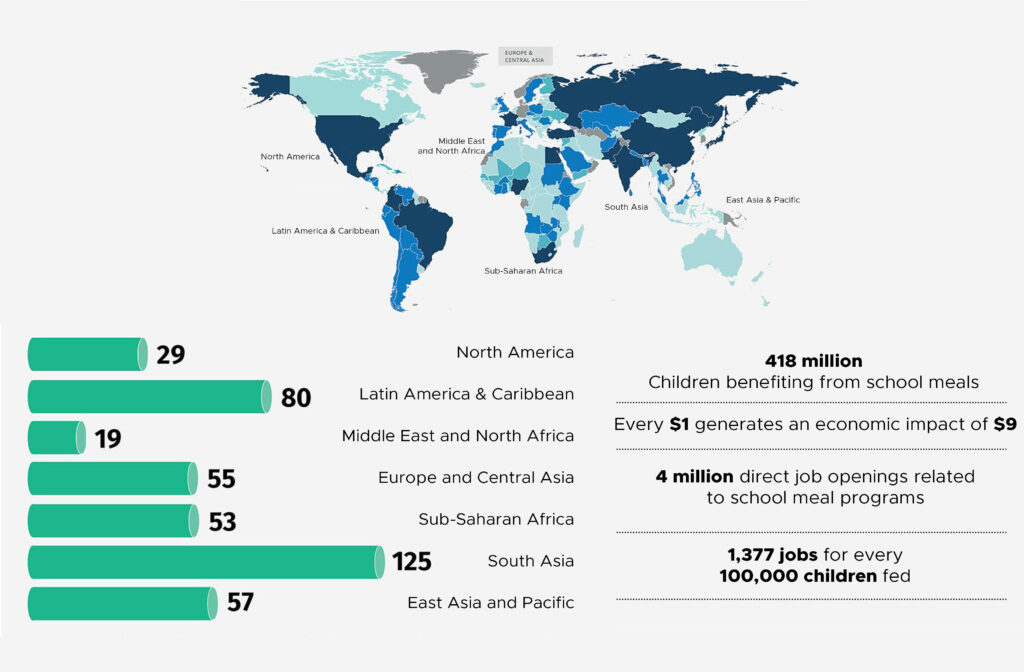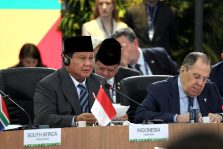Ever since a presidential candidate in Indonesia proposed the program, free school lunches have become a public talking point. Globally, this initiative has been implemented in many countries with proven, remarkable benefits. But what about in Indonesia?
Over the past two years, the world has faced an unprecedented food security crisis, fueled by the economic impacts of the COVID-19 pandemic, climate change, surges in food prices, and the effects of the war in Ukraine, all contributing to widespread hunger.
According to the United Nations World Food Programme (WFP), 349 million people across 79 countries are moving towards starvation, including 153 million children and youths. This struggle for survival is neglecting their education and jeopardizing their future due to hunger.
In Indonesia, stunting remains a significant issue. Despite improvements over previous years, the 2022 National Nutrition Status Survey (SSGI) shows that the prevalence of stunting is still at 21.6 percent, not yet meeting the WHO standard of below 20 percent, and far from the national target of 14 percent by 2024.
Educationally, the 2022 PISA scores, which measure students’ abilities in literacy, numeracy, and science, have declined compared to 2018, including in Indonesia. Since first participating in the survey in 2000, the 2022 PISA scores are among the lowest for Indonesia.
Indonesia has not yet joined the coalition of 76 countries providing free school lunches.
In early 2020, school meal programs had reached 388 million children, or one in every two primary school children globally. The COVID-19 pandemic erased these achievements when schools were forced to close in mid-2020.
In response, a group of UN member states and influential partners launched the “School Meals Coalition.” Led by Finland, France, and Brazil, and supported by the WFP, this coalition aims to prompt immediate action to restore, improve, and expand food and education systems.
The coalition also supports recovery from the pandemic and aims to achieve the Sustainable Development Goals (SDGs), especially the second target of eliminating hunger.
In its implementation, WFP reports that school meal provisions have again become one of the largest social safety nets, benefiting 418 million children worldwide, 30 million more than before the pandemic. Overall, it’s estimated that 41 percent of primary school children now receive a free or subsidized lunch daily.
This significant recovery was possible because of the movement facilitated by the School Meals Coalition, supported by leaders in 76 countries, making it happen in less than a year. The coalition is also backed by 83 stakeholders, including major UN bodies and development partners, and has been hailed as a model of multilateral development.
WFP also notes that over 90 percent of this effort is supported by domestic funding. Nearly all participating countries have made it a national policy, ensuring its ongoing commitment. Each country has a unique history and story in adopting this program.
For example, Japan initiated its school lunch program as far back as 1889 in Yamagata Prefecture for children from less affluent families. Recognizing its benefits, regulations regarding the program were enacted in 1954, and since then, the school lunch program has expanded.
Now, nearly all primary schools and 90 percent of junior high schools in Japan implement the school lunch program, considered an essential part of education. Japan also has Shokuiku, a food education program that extends beyond a healthy diet to foster a cultural habit.
Meanwhile, Zambia, in southern Africa, adopted the program by providing school meals sourced from local production, supporting the local economy and enhancing food quality and accessibility in schools.
Joining the School Meals Coalition “more tangibly beneficial” than G20, BRICS, and APEC?
In practice, school meal programs have directly created 4 million jobs in 85 countries, equivalent to 1,377 jobs for every 100,000 children fed. Most of these jobs involve food preparation by local cooks or small catering enterprises.
While not every country has seen instant success, school meal programs have proven to be an effective model with multisectional benefits. WFP calculates that every dollar invested in the program generates nine dollars in benefits across health, education, social protection, and agriculture sectors.
Source : Untuk Apa Makan Siang Gratis di Sekolah Bagi Semua Anak Setiap Hari?






